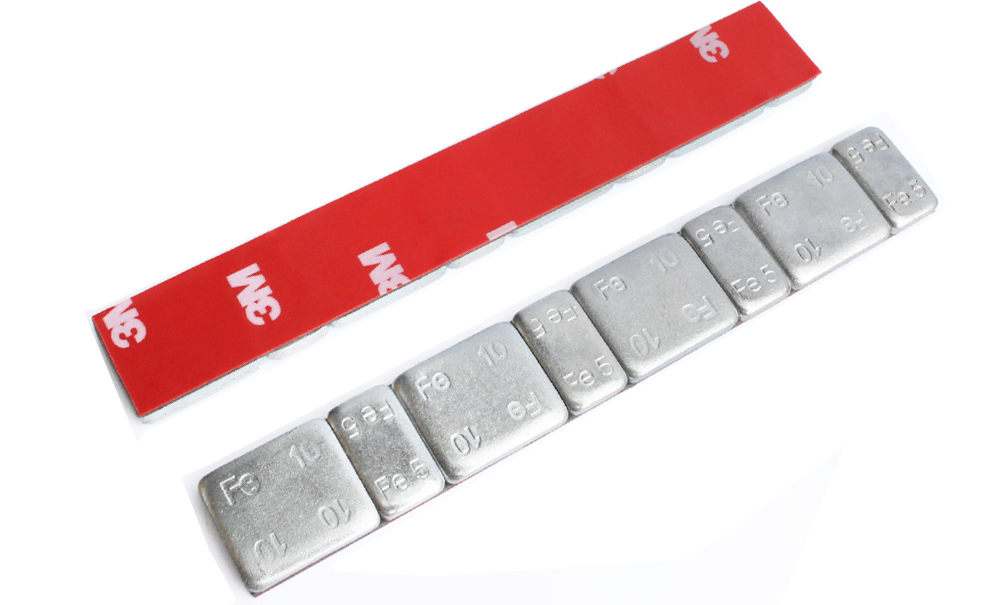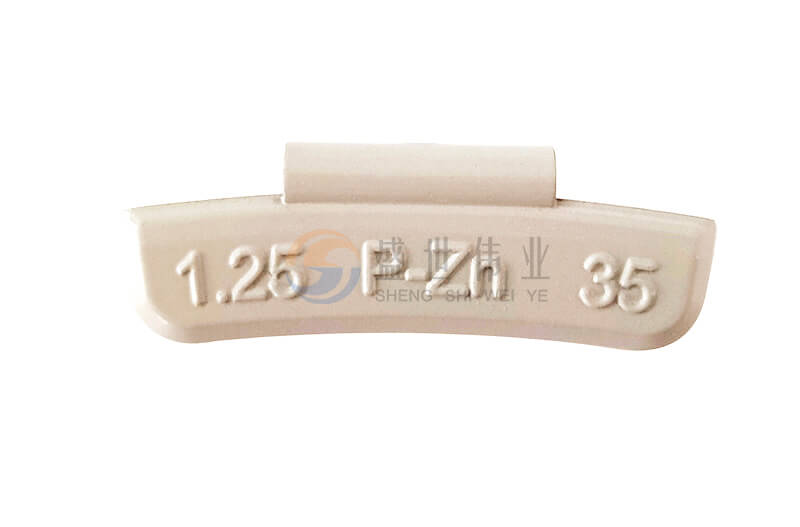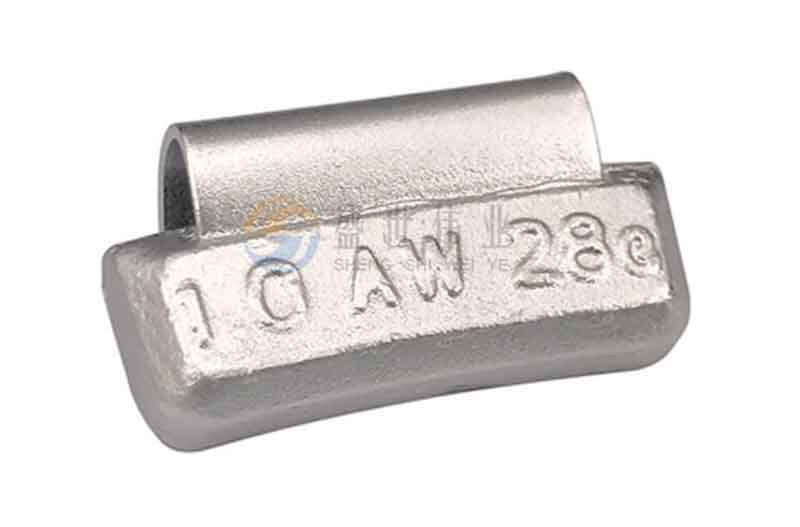Understanding Wheel Weight Materials
Introduction
The three most commonly used wheel balance weights on the market are made of lead, steel or zinc, and are stick-on or clip-on. According to some national regulations, environmental factors, material cost and product adaptability are factors that need to be considered when using.
Steel wheel weight
Steel wheel balance weights are relatively low in cost and have a certain strength and durability. They are not subject to environmental restrictions and can be used in every country.
However, the density of steel is relatively small, and a larger volume may be required to achieve the required balance weight. In addition, iron is prone to rust, which may affect its performance and service life in a humid environment.

Zinc wheel weight
Zinc wheel balance weights are a common alternative material. Zinc has a relatively high density and can provide better balancing performance.
Compared with lead, zinc is less toxic, more environmentally friendly, and is not subject to environmental constraints. At the same time, zinc has good corrosion resistance and can maintain stable performance under various environmental conditions.

Lead wheel weight
Many traditional wheel balance weights are made of lead. The density of lead is relatively high, and the required balance weight can be achieved in a smaller volume.
The advantage is that the balance effect is good and the balance state of the wheel can be accurately adjusted.
However, lead is a toxic metal and has potential harm to the environment and human health. With the improvement of environmental protection requirements, the use of lead balance weights has gradually been restricted.

The United States, Canada and other countries have issued lead bans to restrict the use of lead products. Therefore, please comply with local policies when using in these areas.
Using the Right Material
No matter which material wheel balance weight is chosen, the following aspects should be noted:
1. Material quality
The material of the wheel balance weight should have good corrosion resistance to ensure stable performance under various environmental conditions. For example, zinc and lead balance weights usually have good corrosion resistance, while steel wheel balance weights are prone to rust.
The density of the material should be appropriate to provide accurate wheel balancing weight. Generally speaking, materials with higher density can achieve the desired balancing effect in a smaller volume, but they should not be too heavy to avoid increasing the burden on the wheel.
2. Weight accuracy
Choose a wheel balance weight with high weight accuracy to ensure the balancing effect of the wheel. The weight error of the wheel balance weight should be as small as possible, usually within a certain tolerance range. For example, the weight error of some high-quality wheel balance weights can be controlled within ±1 gram.
You can check the product logo or manual of the wheel balance weight to understand its weight accuracy level. If you have high requirements for balancing accuracy, you can choose a wheel balance weight with higher accuracy.
3. Installation method
The installation method of the wheel balance weight should be simple and reliable, and can be firmly fixed on the wheel. Common installation methods are adhesive and clamping. The adhesive wheel balance weight is glued to the inside of the wheel with glue, which is easy to install, but the quality of the glue and the firmness of the glue need to be ensured. The clamping balance weight is fixed to the wheel rim by a clamp, which is relatively complicated to install, but more firm and reliable.
Choose the appropriate installation method according to your needs and actual situation. If the wheel often drives under bad road conditions, or has high requirements for balancing accuracy, you can choose a clamping balance weight.
4. Brand and quality certification
Choosing a wheel balance weight from a well-known brand usually has better quality assurance. The wheel balance weights of well-known brands have higher standards in production process, quality control and after-sales service, and can provide more reliable products.
Check whether the wheel balance weight has relevant quality certification marks, such as ISO quality certification, CE certification, etc. These certification marks can prove that the wheel balance weight meets certain quality standards and safety requirements.
5. Adaptability
Make sure the wheel balance weight is compatible with your wheel size and type. Different wheel sizes and types may require wheel balance weights of different specifications, so when choosing a wheel balance weight, you should choose it according to your wheel parameters.
